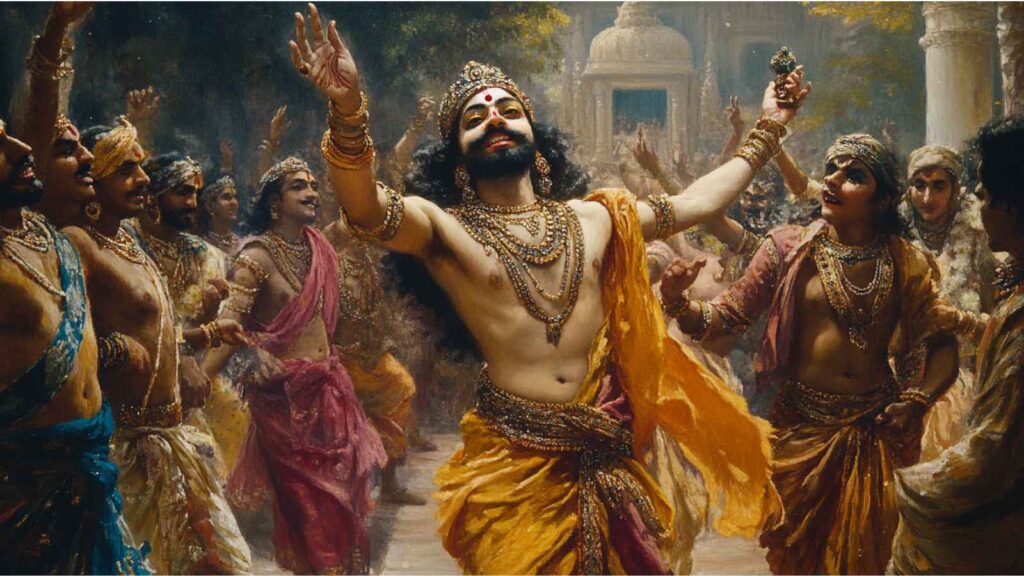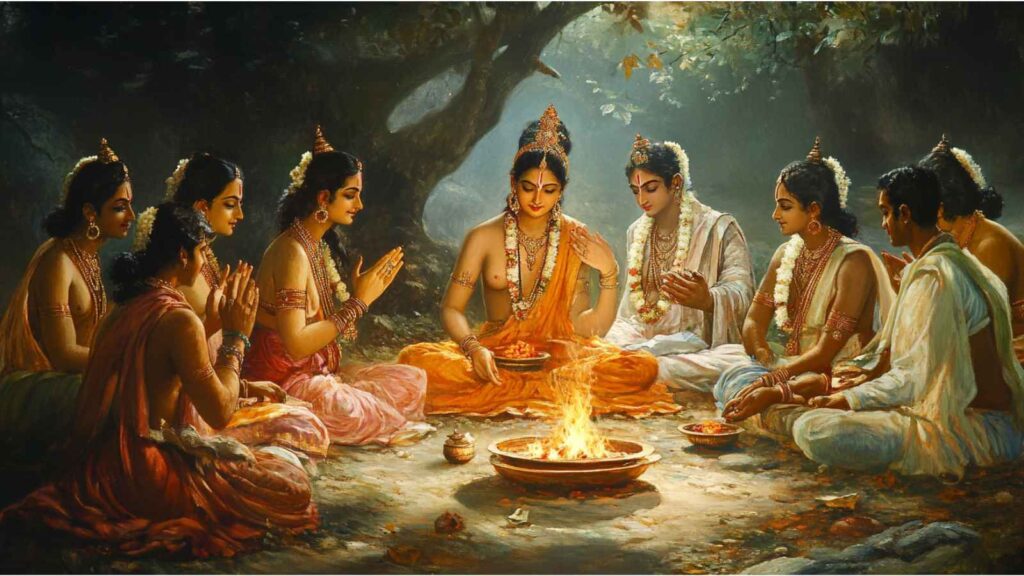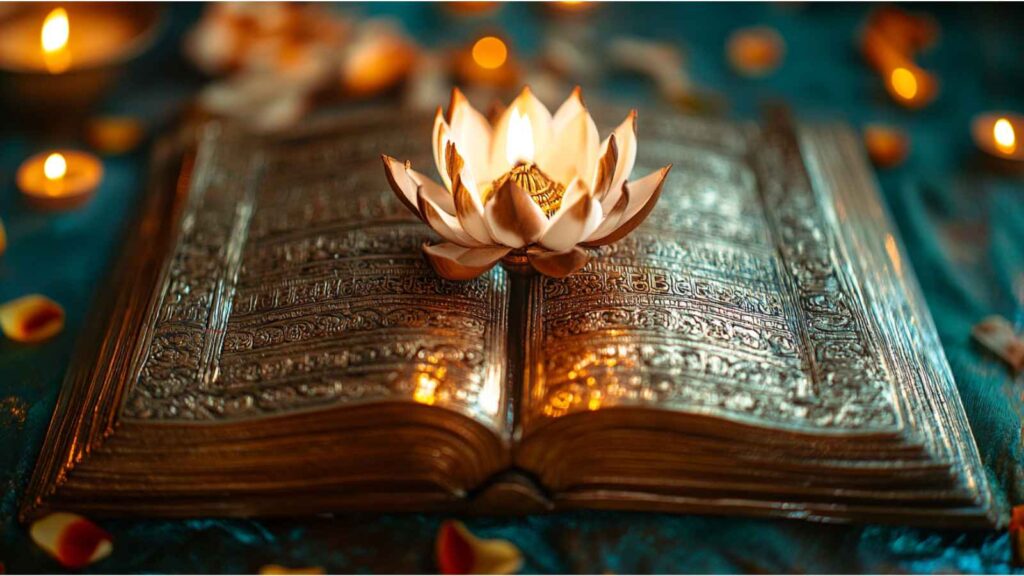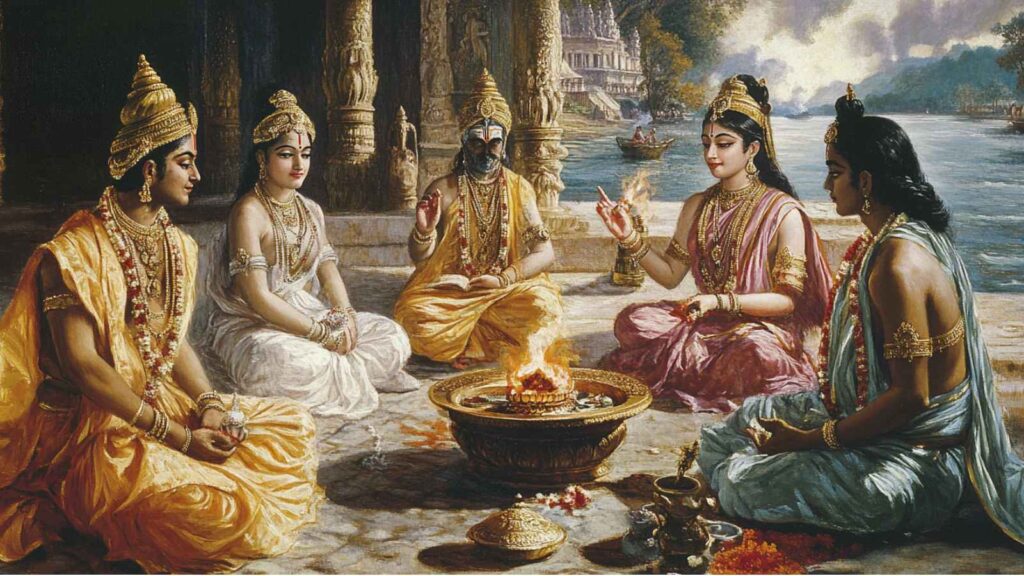The Evolution of Vedic Literature Through the Ages: From Oral Tradition to Written Text
Introduction
Vedic literature stands as the foundation of Hinduism, encompassing a rich body of spiritual, philosophical, and ritualistic texts that have guided millions of people over millennia. The Vedas are considered the oldest and most authoritative scriptures in Hinduism, forming the core of its spiritual and religious practices. However, the journey of these sacred texts has been anything but static. From their origin as oral traditions to the eventual compilation into written form, the Vedic texts have undergone a remarkable evolution, mirroring the cultural and social transitions of ancient India.
Read More About sacred texts
This blog delves into the fascinating evolution of Vedic literature, tracing its journey from an exclusively oral tradition to a written legacy that continues to influence Hinduism today. We will explore how these texts were preserved, transmitted, and eventually recorded, while also examining their profound impact on Hindu rituals, philosophy, and society.
The Birth of Vedic Literature: The Oral Tradition

The origins of Vedic literature are deeply rooted in the oral tradition. For centuries, the Vedas were passed down through generations via oral transmission, ensuring their preservation and purity. The earliest form of the Vedas, including the Rigveda, Yajurveda, Samaveda, and Atharvaveda, were composed in Sanskrit and consisted of hymns, mantras, and sacrificial formulas that were memorized by priests, scholars, and sages.
The Role of Rishis and Brahmins in Oral Transmission
The rishis (sages) played a pivotal role in the creation and transmission of the Vedas. These wise men, believed to have divine insight, were the original composers of the hymns and mantras that make up the Vedic texts. They transmitted the knowledge orally, relying on memorization and recitation techniques that ensured the accuracy and integrity of the teachings.
Brahmins, the priestly class in Vedic society, were the primary custodians of the Vedas. They meticulously preserved and recited the sacred hymns during rituals and sacrifices, and their role was central to the transmission of Vedic knowledge. The exact pronunciation of words and syllables was considered crucial, and strict systems of mnemonic aids and recitation techniques were developed to ensure that nothing was lost in the transmission process.
The Impact of Oral Tradition on Vedic Literature
The oral tradition was not merely a method of passing down knowledge; it was integral to the very nature of the Vedic texts. The performance of Vedic hymns, often in a ritualistic context, imbued them with sacred power. The repetition of the hymns, coupled with their deep spiritual resonance, created an unbreakable connection between the sacred text and the divine. The recitation of the Vedas was believed to invoke divine blessings, leading to prosperity, health, and spiritual fulfillment.
The oral transmission of the Vedas also ensured a dynamic interaction between the text and its community. Over time, as the Vedic texts were transmitted orally, variations and regional adaptations emerged, contributing to the diversity of interpretations and practices across different parts of ancient India.
The Birth of Vedic Literature: The Oral Tradition

The transition from an oral tradition to written texts marked a significant shift in the evolution of Vedic literature. While the Vedas were primarily transmitted orally for several centuries, the growing complexity of rituals, the spread of Vedic knowledge, and the development of writing systems eventually led to the written recording of these sacred texts.
The Emergence of Writing in Ancient India
Writing in ancient India is believed to have developed around the 3rd century BCE, with the introduction of scripts such as Brahmi and Kharosthi. These scripts enabled the transcription of sacred texts, facilitating their preservation and dissemination beyond oral traditions. With the development of writing, the Vedas could be more easily compiled and stored in written form, marking a turning point in the history of Vedic literature.
The First Written Versions of the Vedas
The earliest written versions of the Vedas were primarily focused on the Rigveda, which is considered the oldest of the four Vedas. Written in Sanskrit, the Vedic texts were transcribed onto materials like palm leaves, birch bark, and other natural substances that could endure the passage of time. The task of transcribing the Vedas was carried out by learned Brahmins and scholars, who preserved the texts with a high degree of accuracy.
The transition to written texts allowed for the Vedas to be preserved in a more permanent form, ensuring their survival for future generations. The written texts also allowed for greater standardization of the Vedic hymns, ensuring that the texts would be accessible to a broader audience beyond the priestly class.
The Vedic Texts: From the Four Vedas to the Upanishads

While the Vedas themselves form the core of Vedic literature, the evolution of these texts did not stop with the four Vedas. Over time, other texts and philosophical treatises emerged that expanded on the themes and concepts introduced in the Vedas. These texts, such as the Brahmanas, Aranyakas, and Upanishads, are considered integral parts of Vedic literature.
The Brahmanas and Aranyakas
The Brahmanas are prose texts that provide detailed instructions on the performance of Vedic rituals, including sacrificial ceremonies, offerings, and prayers. These texts were composed after the original hymns and mantras of the Vedas and served as a guide for priests and scholars on how to perform complex rituals.
The Aranyakas, on the other hand, are philosophical texts that were often written by ascetics or hermits who retreated to the forests for meditation and spiritual practice. These texts provide interpretations of the Vedic hymns and offer deeper insights into the nature of the divine, the soul, and the cosmos.
The Upanishads: The Philosophical Heart of the Vedas
The Upanishads, often considered the culmination of Vedic literature, represent a shift from ritualistic practices to philosophical inquiry. These texts explore the nature of reality, the concept of Brahman (the ultimate reality), and the relationship between the individual soul (Atman) and the divine. The Upanishads have had a profound impact on Hindu philosophy, influencing schools such as Vedanta and shaping key concepts like meditation, self-realization, and liberation (moksha).
The Upanishads mark a move away from the external rituals of the earlier Vedic texts toward internal contemplation and spiritual enlightenment. They continue to be studied and revered by scholars, philosophers, and spiritual seekers to this day.
The Continued Influence of Vedic Literature

Even after the Vedas were transcribed into written form, their influence on Hinduism remained profound and enduring. The Vedic texts laid the foundation for Hindu rituals, philosophy, and spirituality, and they continue to shape religious practices and teachings in modern times.
Vedic Rituals in Contemporary Hinduism
Many of the rituals and ceremonies described in the Vedas are still practiced today. For example, fire sacrifices (yajnas) and the chanting of Vedic hymns remain integral to Hindu religious ceremonies, particularly in temples and during special festivals. The Vedas continue to be recited by Brahmins in various ceremonies, invoking divine blessings and maintaining the sacred link between the material world and the divine.
Vedic Philosophy in Modern Hinduism
The philosophical teachings of the Vedas, particularly those found in the Upanishads, continue to influence Hindu thought. Concepts like the nature of the soul, the pursuit of self-realization, and the understanding of the universe as interconnected are central to Hindu philosophy and practice.
Conclusion
The evolution of Vedic literature from an oral tradition to written texts represents a remarkable journey through time. From the sacred hymns of the Rigveda to the philosophical inquiries of the Upanishads, Vedic literature has shaped the spiritual, cultural, and intellectual fabric of Hinduism. Its journey from oral transmission to written form has ensured its preservation and continued relevance, allowing generations of Hindus to engage with the divine, understand the cosmos, and seek spiritual enlightenment.
Vedic literature remains a testament to the enduring wisdom of ancient India, offering a window into the religious and philosophical thought of one of the world’s oldest living traditions.


